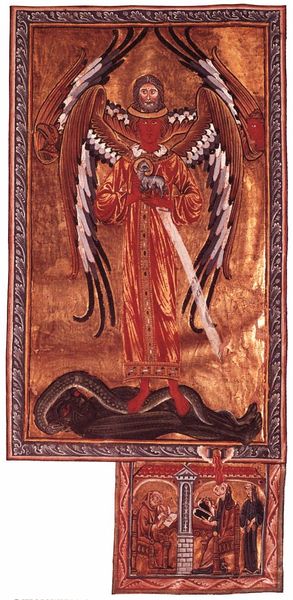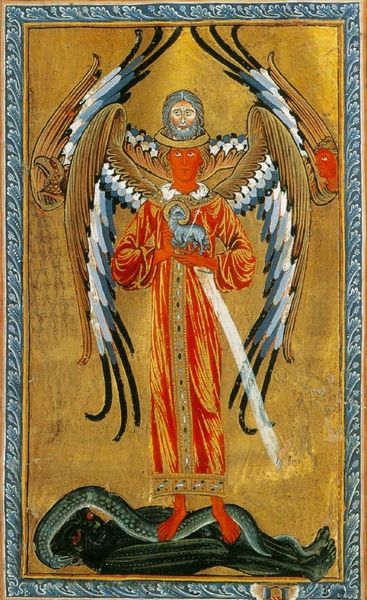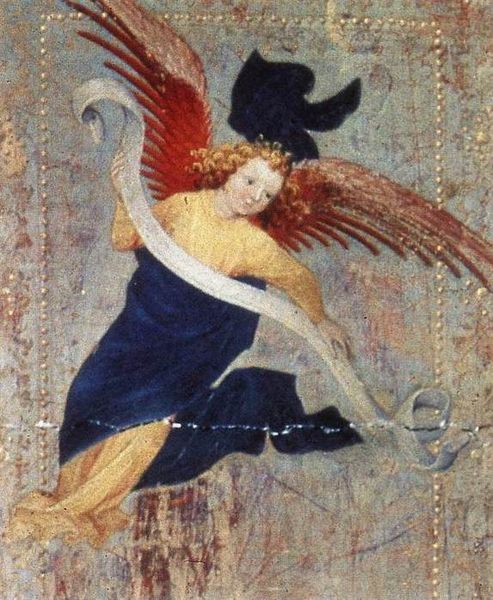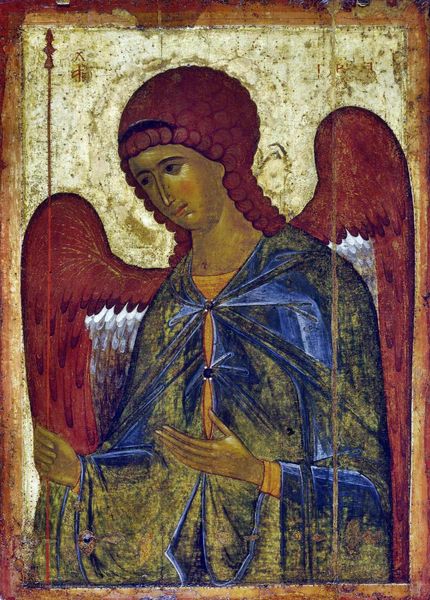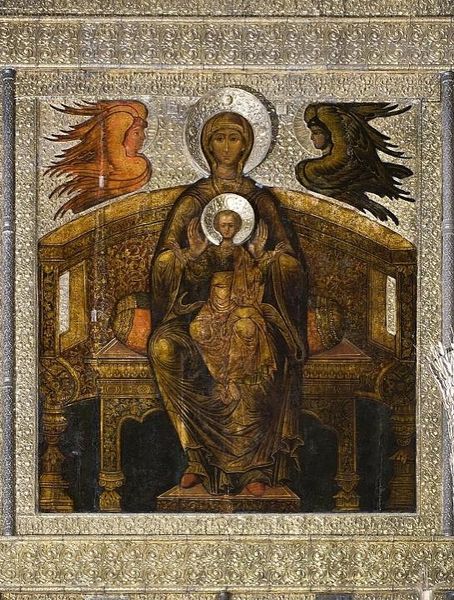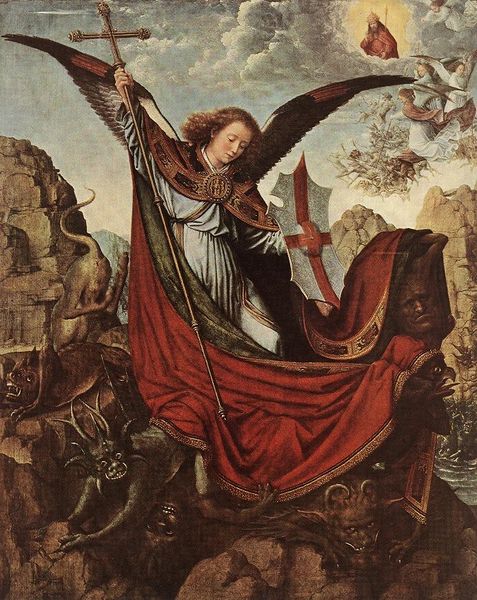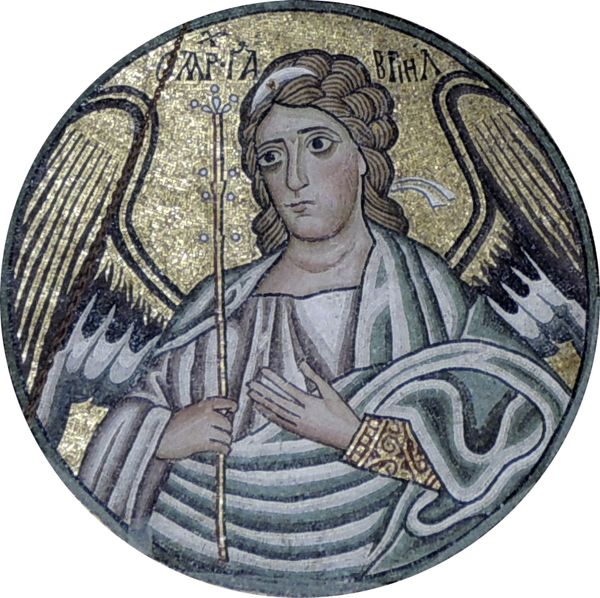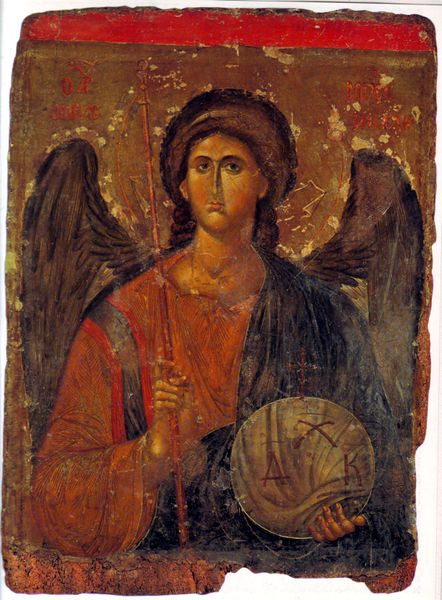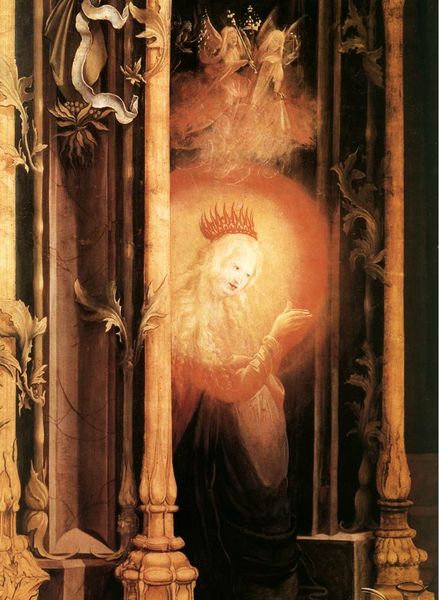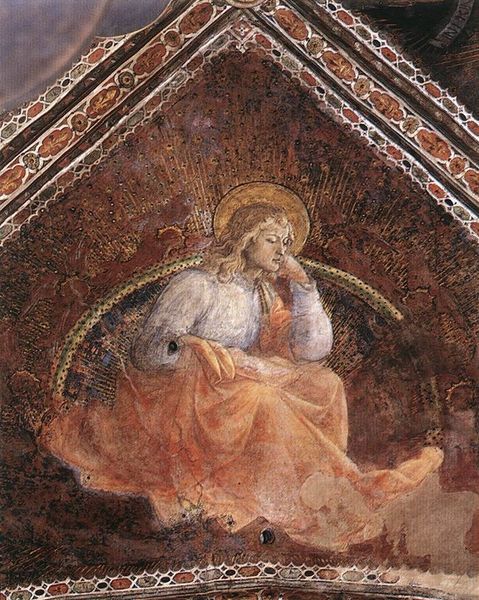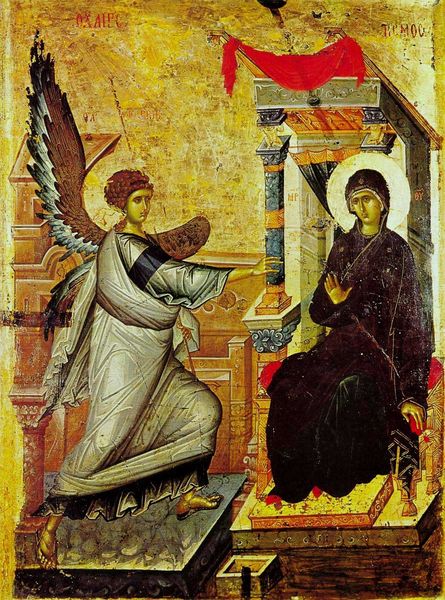
mosaic
#
mosaic
#
byzantine-art
#
prophet
#
figuration
#
arch
#
angel
Copyright: Public domain
This mosaic of the Angel Gabriel was made in the Hagia Sophia in Istanbul by Byzantine artists. The gender identity of the angel, who is typically presented as male in religious texts, is visually softened and made more androgynous. The angel's face is delicately rendered with feminine features, such as soft cheeks and full lips. Yet, at the same time, its posture and wings are powerful and commanding, reflecting a more masculine energy. The use of gold tesserae, or small mosaic tiles, creates an ethereal and otherworldly atmosphere, emphasizing the angel's divine status. Light shimmers across the mosaic's surface, animating the figure and suggesting its active role as a messenger between the earthly and celestial realms. The mosaic symbolizes not only spiritual communication but also a broader social dialogue about gender and identity, themes that resonate across centuries. Consider the mosaic as a reflection of the complex interplay between religious doctrine, artistic interpretation, and societal values.
Comments
No comments
Be the first to comment and join the conversation on the ultimate creative platform.

